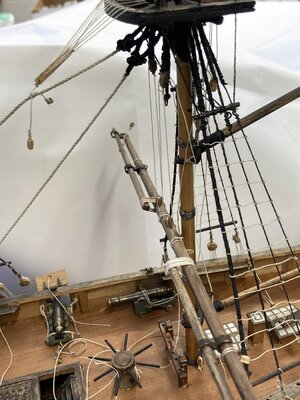I've been progressing the rigging. This is taking some working out because I now realise that the rigging plan is extremely simplified for the kit, and I've been trying to improve on it. I have a copy of Peterssen, which is not always a help as it is an English ship illustrated not French, and it looks like there are significant differences;- for instance, the mizzen topgallant and royal braces are shown in the kit to run forwards to the main top, while Peterssen shows them running aft to the spanker gaff. Moreover, the kit has them as ropes tied to the yards at one end and to the mast at the other, with no pretence at adjustability! So there's a lot of 'freedom of expression' allowed!
I've got nearly all the standing rigging done barring backstays and ratlines - I'm leaving all that to last for accessibility to the deck for running rigging.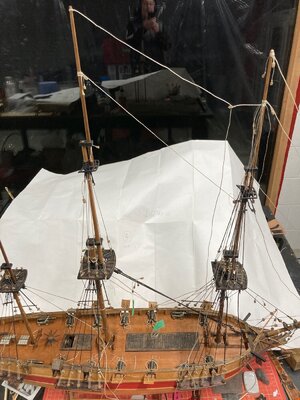
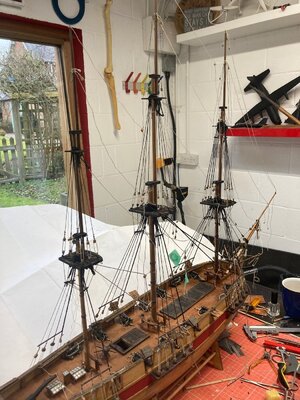
Here I'm trying to make the forestays & jibstays a bit more authentic, the kit just has them all tied off to the bowsprit.
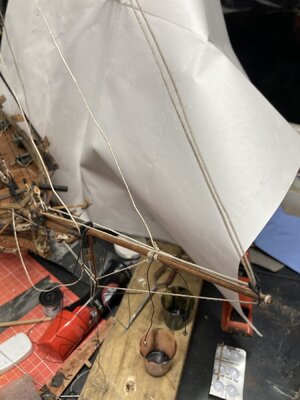
The kit had the topgallant shrouds tied off at the futtock staves, while other texts have them threaded through there and made off at the topmast futtock plates. I have tried to emulate that, and made figure-8s of cord to imitate the lashings. Incidentally, I read that futtock staves are made of rope - I had assumed that they were wood or metal like sheer poles.
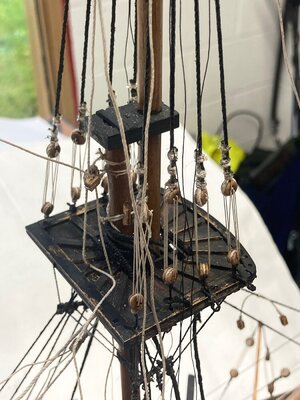
The kit plans show no ratlines on the topgallant shrouds - is this correct? How do you get up to the royal yards without them?
I got a bit fed up with rigging in the cold weather, so turned to trying my hand at other bits. Here's a couple of assembled parrals (commercial items). Gravity can make for a long period on the floor trying to find all the bits when you get it wrong! How do parrals run over the wooldings?
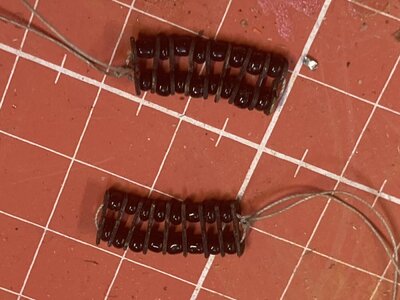
I also made my first yard - the fore course. Again, the kit illustration is fairly basic, so I've improved it (in my eyes anyway!) Nice to be doing some woodwork again.
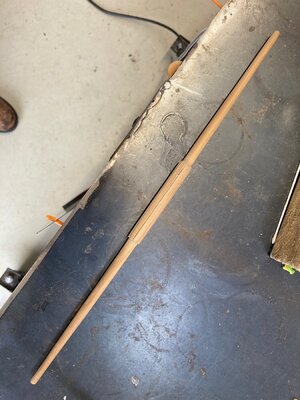
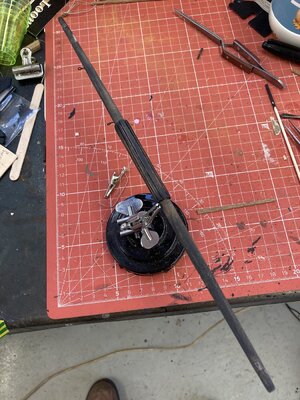
The supplied parts for the stunsail booms are brass wire for the outboard supports and string for the other attachments, which didn't seem correct, so I constructed inner irons from some copper strip. This improved things but I wasn't happy with outer end, so i painted a strip of paper matt black then glued it over the brass wire fitting. Happier now, but you can see I'm a long way from properly authentic!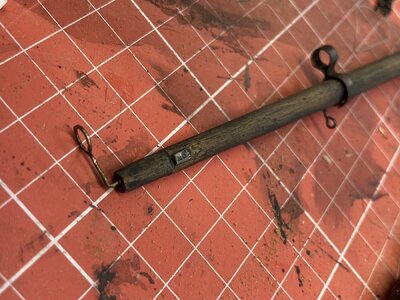
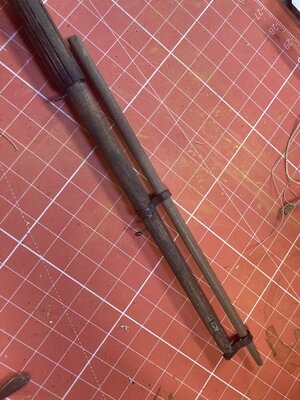
I'm dreading the anti-gravity footropes; they'll take a bit of experimentation to make them sag satisfactorily.
I've got nearly all the standing rigging done barring backstays and ratlines - I'm leaving all that to last for accessibility to the deck for running rigging.


Here I'm trying to make the forestays & jibstays a bit more authentic, the kit just has them all tied off to the bowsprit.

The kit had the topgallant shrouds tied off at the futtock staves, while other texts have them threaded through there and made off at the topmast futtock plates. I have tried to emulate that, and made figure-8s of cord to imitate the lashings. Incidentally, I read that futtock staves are made of rope - I had assumed that they were wood or metal like sheer poles.

The kit plans show no ratlines on the topgallant shrouds - is this correct? How do you get up to the royal yards without them?
I got a bit fed up with rigging in the cold weather, so turned to trying my hand at other bits. Here's a couple of assembled parrals (commercial items). Gravity can make for a long period on the floor trying to find all the bits when you get it wrong! How do parrals run over the wooldings?

I also made my first yard - the fore course. Again, the kit illustration is fairly basic, so I've improved it (in my eyes anyway!) Nice to be doing some woodwork again.


The supplied parts for the stunsail booms are brass wire for the outboard supports and string for the other attachments, which didn't seem correct, so I constructed inner irons from some copper strip. This improved things but I wasn't happy with outer end, so i painted a strip of paper matt black then glued it over the brass wire fitting. Happier now, but you can see I'm a long way from properly authentic!


I'm dreading the anti-gravity footropes; they'll take a bit of experimentation to make them sag satisfactorily.
Last edited:



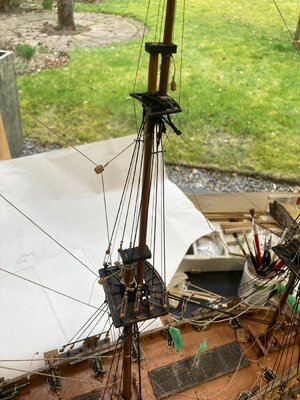
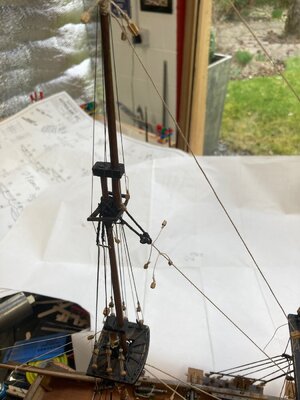
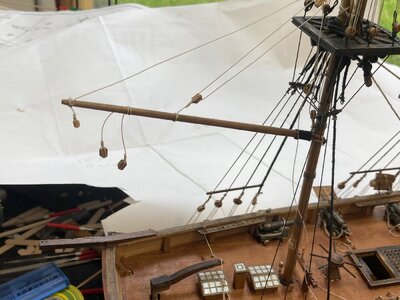

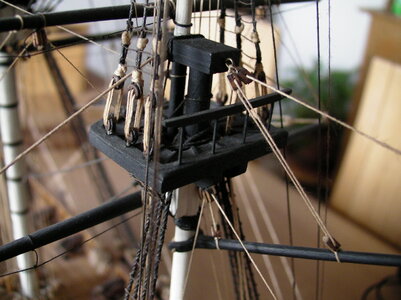
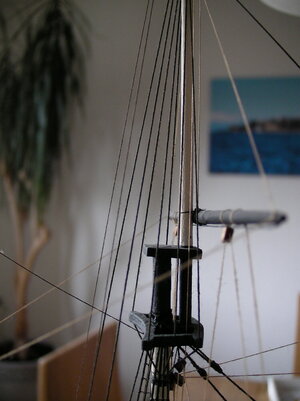
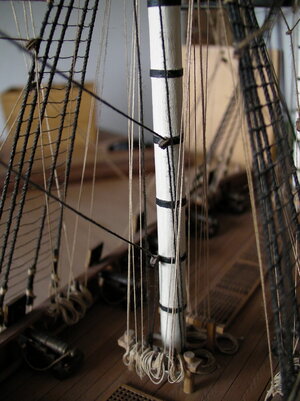
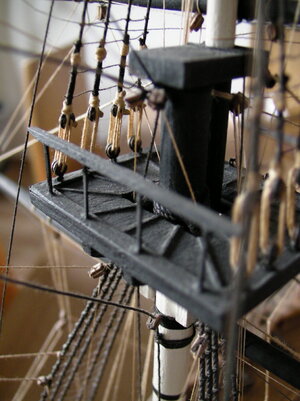

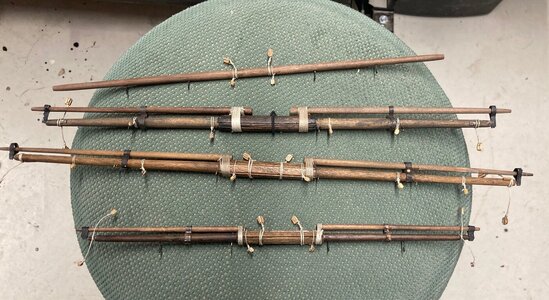
![IMG_8650[1].jpg IMG_8650[1].jpg](https://shipsofscale.com/sosforums/data/attachments/207/207491-1a1a4ac94688ea2f60aeef4e60c1080c.jpg?hash=GhpKyUaI6i)
![IMG_8651[1].jpg IMG_8651[1].jpg](https://shipsofscale.com/sosforums/data/attachments/207/207494-405c0982e280b9232ad3c06071e27b2b.jpg?hash=QFwJguKAuS)
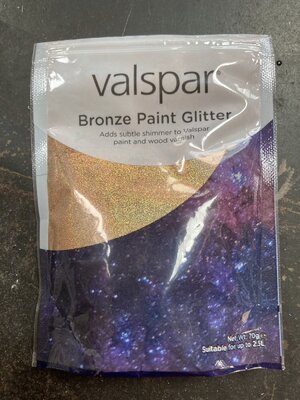
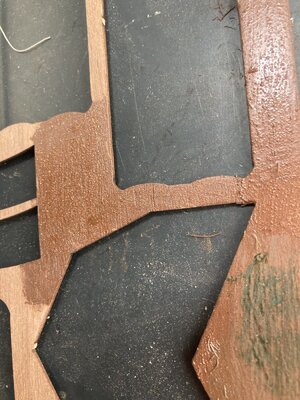
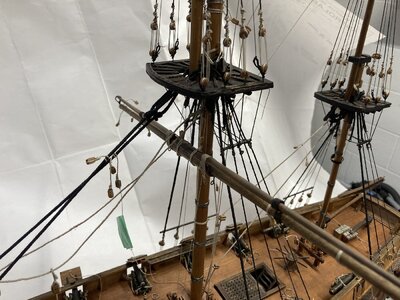
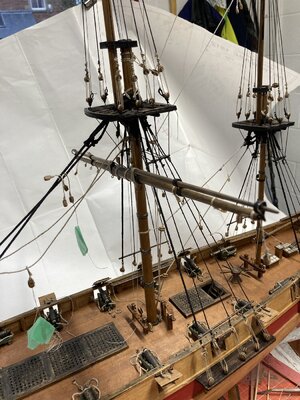
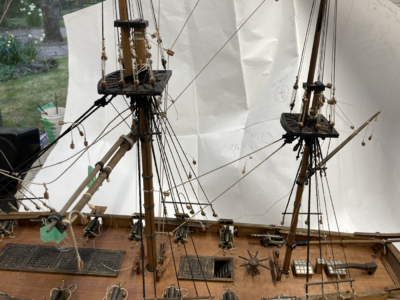
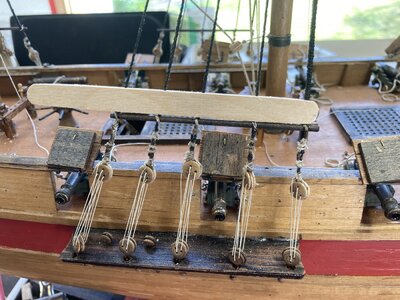

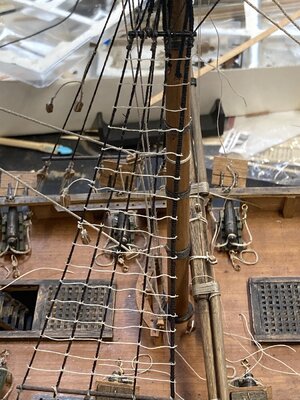
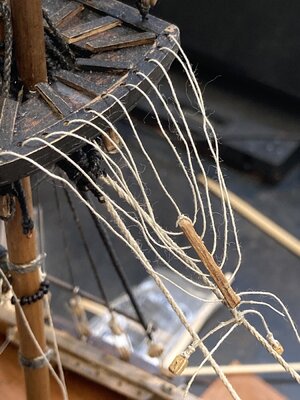

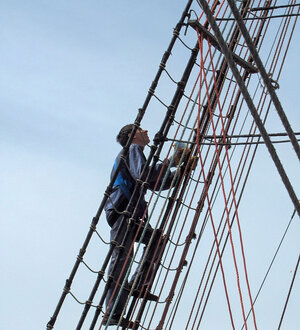
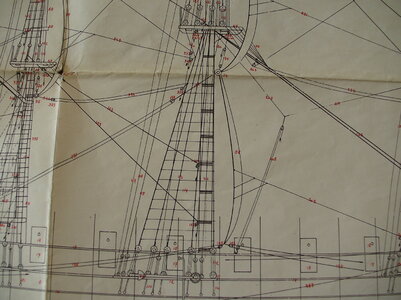
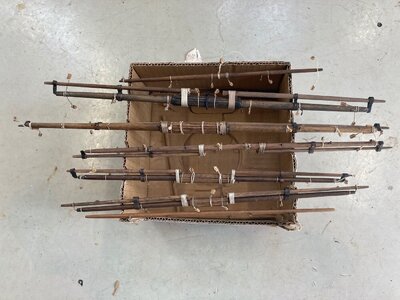
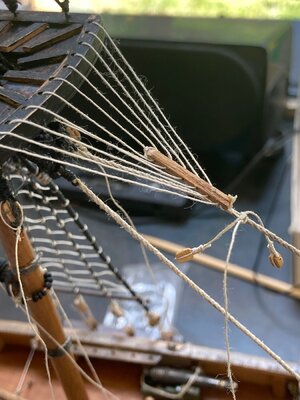
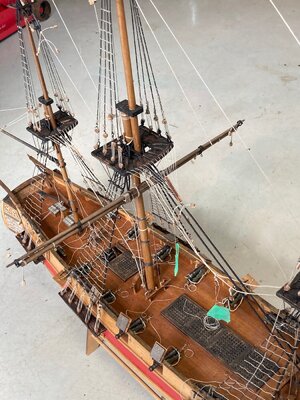
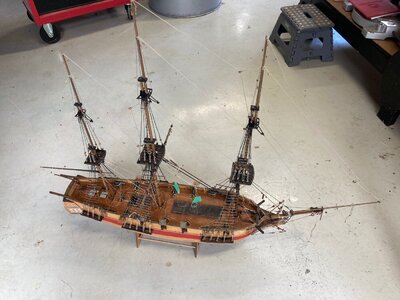
![IMG_8717[1].jpg IMG_8717[1].jpg](https://shipsofscale.com/sosforums/data/attachments/288/288598-89ef5df80061e206811e49dbd14cf308.jpg?hash=ie9d-ABh4g)
![IMG_8722[1].jpg IMG_8722[1].jpg](https://shipsofscale.com/sosforums/data/attachments/288/288601-8e5553ef0f8f2df8303a35d8f1486100.jpg?hash=jlVT7w-PLf)
![IMG_8721[1].jpg IMG_8721[1].jpg](https://shipsofscale.com/sosforums/data/attachments/288/288602-213fcb3c78c73164424d7e5fba59d365.jpg?hash=IT_LPHjHMW)
![IMG_8721[1].jpg IMG_8721[1].jpg](https://shipsofscale.com/sosforums/data/attachments/288/288600-213fcb3c78c73164424d7e5fba59d365.jpg?hash=IT_LPHjHMW)
